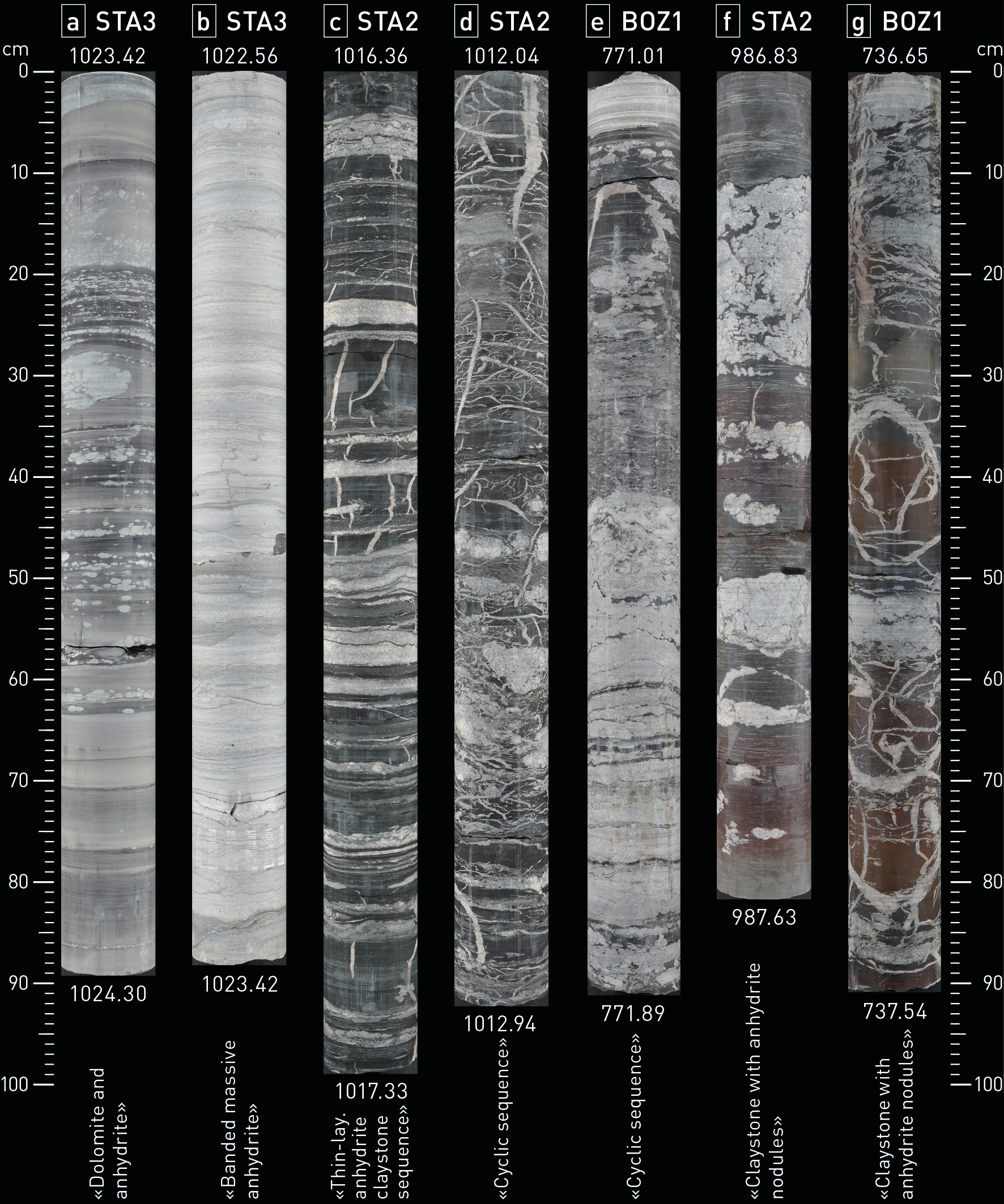The Bänkerjoch Formation was deposited in vast sabkha plains at the southern border of the Central European Basin under arid conditions. The depositional environment was characterised by subaerial flats, ephemeral and saline ponds to lagoons subjected to sporadic marine ingressions. 3D seismic facies interpretation indicates that the Bänkerjoch Formation is characterised by a complex depositional history with potentially one or more evaporite dissolution events (Nagra 2024a, 2024b, 2024c). The sedimentation rates are overall medium, but fluctuated significantly between phases of deposition and non-deposition (Fig. 4‑4, Fig. 4‑5, Fig. 4‑6). The Bänkerjoch Formation formed during a large-scale regressive cycle with many superimposed small-scale regressive cycles (Dronkert et al. 1990). In the Bänkerjoch Formation, no halite and dissolution breccias such as in the Zeglingen Formation have been found; this reflects deposition in a marginal position of the basin with a relatively high argillaceous input. Conversely, coeval sedimentary rocks exposed in the present-day French Jura Mountains formed in a more basinal environment where halite was deposited. The depositional evolution of the Bänkerjoch Formation is subdivided here into four time intervals (Fig. 4‑11):
The first time interval (237_Lad_400 to 237_Lad_300) approximately corresponds to the «Dolomite and anhydrite» subunit. During this time, the depositional environment was characterised by saline ponds and lagoons, with anhydritic to dolomitic sedimentation as well as argillaceous input.
The second time interval (237_Lad_300 to 237_Lad_200) approximately corresponds to the «Banded massive anhydrite» subunit. This time interval was characterised by depositional environments ranging from saline ponds to lagoons, with generally anhydritic sedimentation.
The third time interval (237_Lad_200 to 237_Lad_100) approximately corresponds to the «Thin-layered anhydrite claystone sequence» and «Cyclic sequence» subunits. During this time interval, thick successions of sediments were deposited in shallow and ephemeral ponds as well as subaerial flats. In subaerial flats, pedogenic processes in combination with groundwater fluctuations and periodic flooding led to the formation of nodular to bedded sulphate horizons (cycles).
The fourth time interval (237_Lad_100 to 227_Car_300) approximately corresponds to the «Claystone with anhydrite nodules» subunit. This time interval is dominated by subaerial, more argillaceous sediments. Pedogenesis and groundwater fluctuations led to the formation of nodular anhydrite.

Fig. 4‑12:Selected core photos of the Bänkerjoch Formation
(a) & (b) beige to dark grey dolomitic marl with white anhydrite nodules and beds of beige grey argillaceous dolostone, above 1'023.45 m: white massive to thin-bedded anhydrite with fine layers of dark grey dolomitic claystone; (c) alternating laminated layers of white dolomitic anhydrite and black anhydritic claystone with few white anhydrite veins; (d) white nodular anhydrite (chicken-wire) with frequent anhydrite veins and black anhydritic claystone; (e) from bottom to top: cyclic sequence of white nodular anhydrite (chicken-wire), dark grey dolomitic claystone with nodular to laminated beds of anhydrite and black anhydritic claystone with anhydrite veins; (f) & (g) dark grey to brown anhydritic claystone with white nodular anhydrite partly enriched in beds traversed by anhydrite veins.

